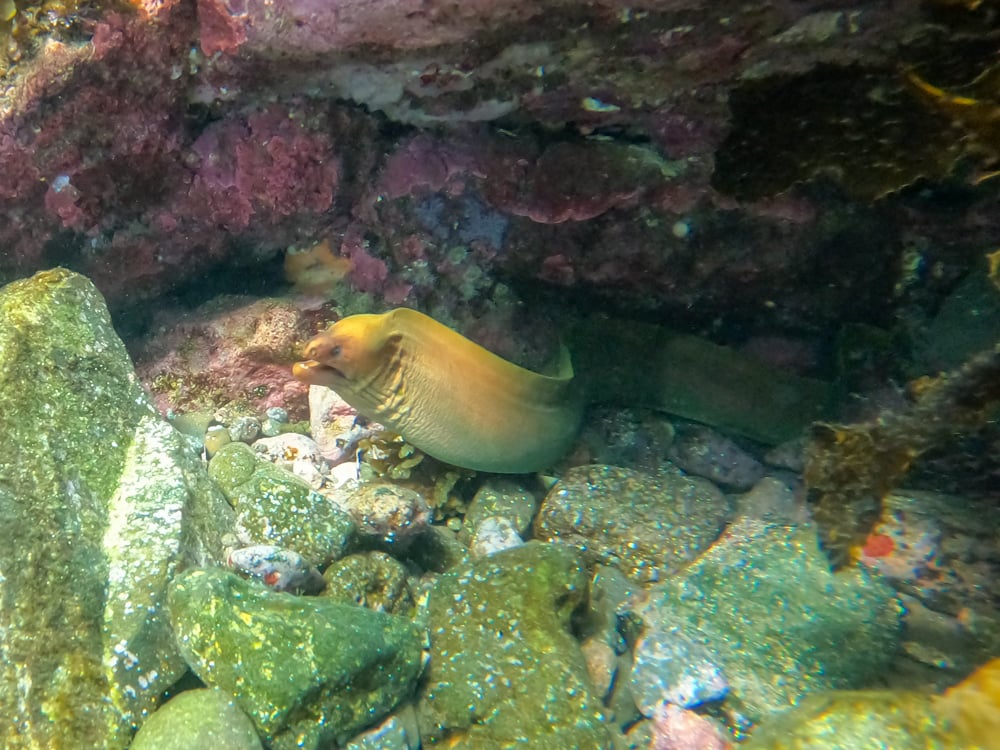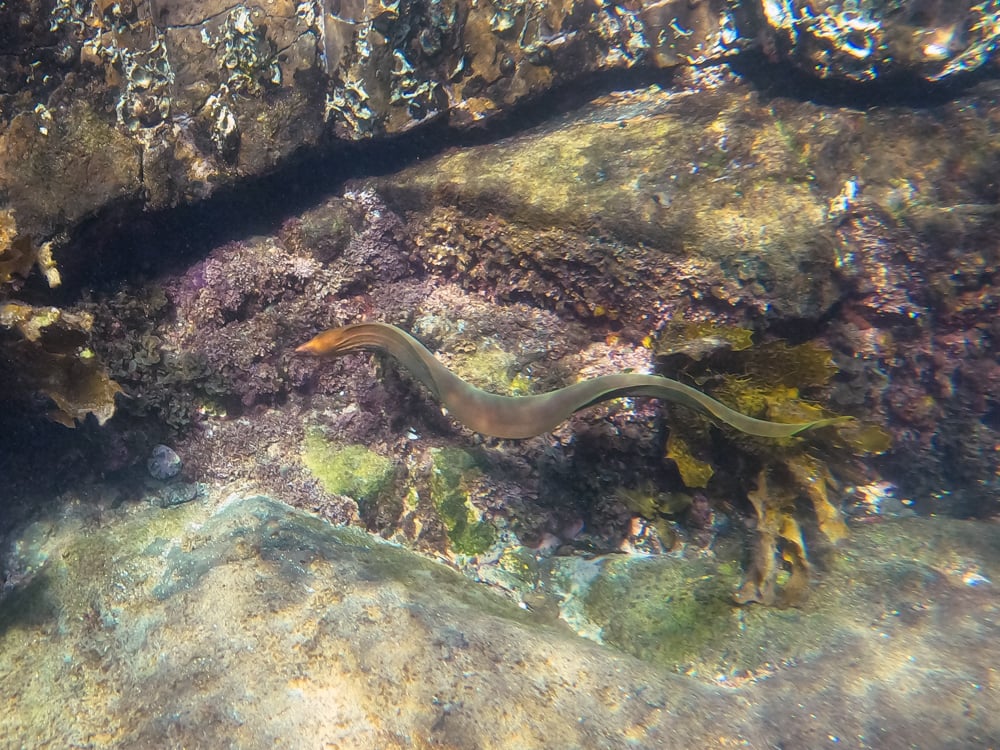I’m sure many of you have had that moment of awe when a unique marine creature crosses your path during an underwater adventure. Let’s deep dive into one such wonder of our Australian waters – the Southern Green Moray Eel.
Anatomy and Identification
Southern Green Moray Eels, scientifically known as Gymnothorax prasinus, are a sight to behold. Their slender, elongated bodies can reach up to 90 cm in length (sources vary on this) and their skin boasts a stunning shade of greenish yellow – hence the name. You’ll find they have a long, continuous dorsal fin that extends from their head to their tail, and they lack pectoral and pelvic fins. The Southern Green Moray’s small, beady eyes might not offer the best vision, but their extraordinary sense of smell more than makes up for it!

Lifecycle and Special Events
The Moray Eels begin their journey as tiny, transparent larvae called leptocephali. These larvae drift in the open ocean for almost a year before morphing into glass eels, then elvers, before finally maturing into the full-fledged adults we usually see while snorkeling.
One of the most fascinating aspects of these eels’ lives is their mass spawning events. These spectacular events take place seasonally, with adult eels gathering in large numbers to reproduce, providing a mesmerizing underwater spectacle.
Distribution and Conservation Status
The Southern Green Moray Eel is endemic to Australia, calling the temperate waters of our southern coastlines home. They love hiding in crevices and holes in rocky reefs, estuaries, and seagrass beds, from New South Wales all the way to South Australia. They’re nocturnal creatures, making sightings during the day relatively rare.
In terms of conservation, the Southern Green Moray Eel is currently not classified as a threatened species. However, maintaining a clean and healthy marine environment is essential for their survival and the wellbeing of all our marine species.
Behaviour and Character
These eels are solitary, shy, and pretty docile unless provoked. They typically stay hidden during the day, coming out to hunt at night. Their diet consists mainly of crustaceans and small fish. Despite their secretive nature, they’re known to develop friendly relationships with humans who respect their space, adding a level of charm to their elusive character.
Snorkeling with the Southern Green Moray Eel
Snorkelling with Moray Eels is simple: respect and distance. These creatures are generally non-aggressive, but they might defend themselves if they feel threatened. Keep a safe distance, avoid sudden movements, and absolutely do not try to feed them. Remember, we are guests in their underwater home.

Distribution
Temperate Australasia, from Queensland to South Australia.
iNaturalist
[xyz-ips snippet=”inat-latest-observation-date”]
Facts
Max Size: 90 cm
Depth: 0-20m
Lifespan: 10-15 years
Risk and Safety
Low Risk. Moray eels are shy and will avoid contact, but can bite if provoked. Bites can be painful and require treatment.
Conservation
IUCN Status: Least Concern
Population: Trend Unknown